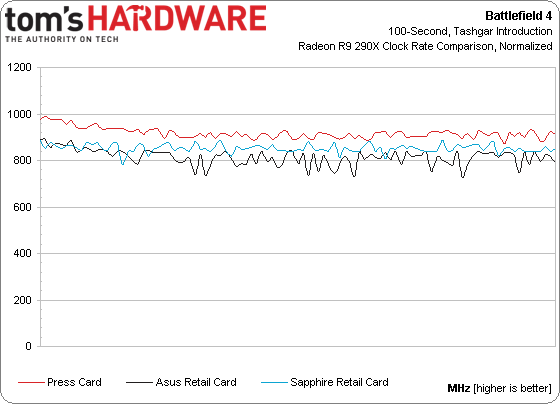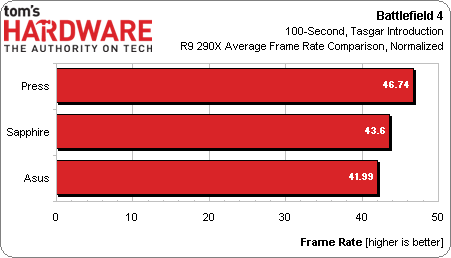The Cause Of And Fix For Radeon R9 290X And 290 Inconsistency
We first observed differences between the Radeon R9 290X cards that AMD sent out for review and the ones being sold online just before our R9 290 coverage went live. After additional testing, we have answers, feedback from AMD, and more questions.
Can We Fix The Variance Ourselves?
The next step was to start fiddling with the Catalyst Control Center’s OverDrive applet to see if we could manually dial in equivalent fan speeds and solve the issue ourselves. On Asus’ card, a 43% maximum duty cycle got us as close as possible to AMD’s press board. Sapphire’s R9 290X needed a 42% override to get there. The outcome isn’t exact, but with 1% granularity in AMD’s driver, it’s impossible to get any closer.
The press and Asus cards are almost identical, but Sapphire’s fan is spinning about 30 RPM quicker. In theory, that only means it should perform better than AMD’s sample, if anything.
Asus’ R9 290X comes off of its 727 MHz floor with an extra 200 RPM of fan speed to help clock rates. Its new average is 792 MHz. Adding 100 RPM to Sapphire’s ceiling also helps, increasing that board’s average from 809 to 852 MHz. But neither retail-purchased product is able to catch the card we first received from AMD, which averages 917 MHz.
Even when we bring the retail cards up to the press board’s fan speed (and beyond), they are not as fast. In fact, our press board is still more than 11% quicker than Asus Radeon R9 290X. It’s 7% faster than Sapphire’s.
Get Tom's Hardware's best news and in-depth reviews, straight to your inbox.
Current page: Can We Fix The Variance Ourselves?
Prev Page The Difference Between My R9 290X And Yours Next Page AMD’s Solution Surfaces


